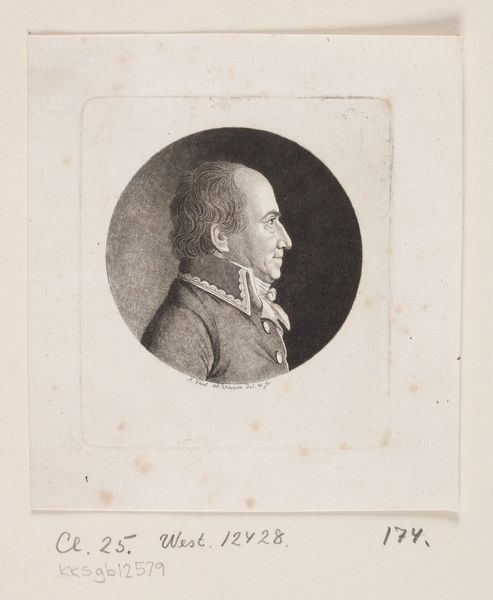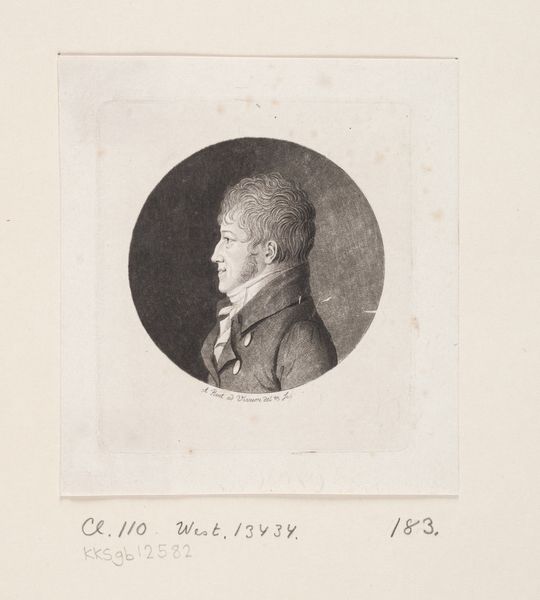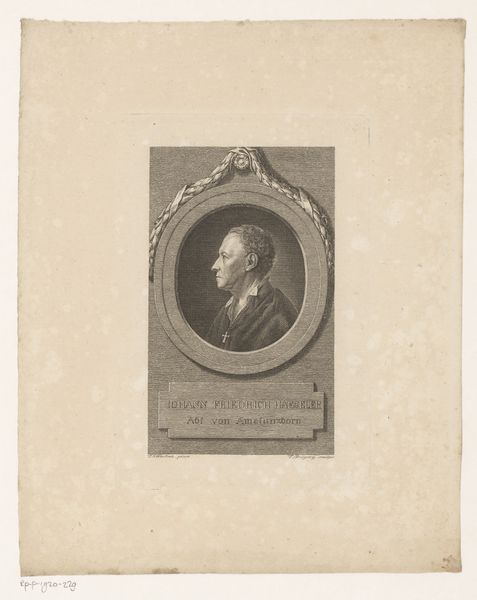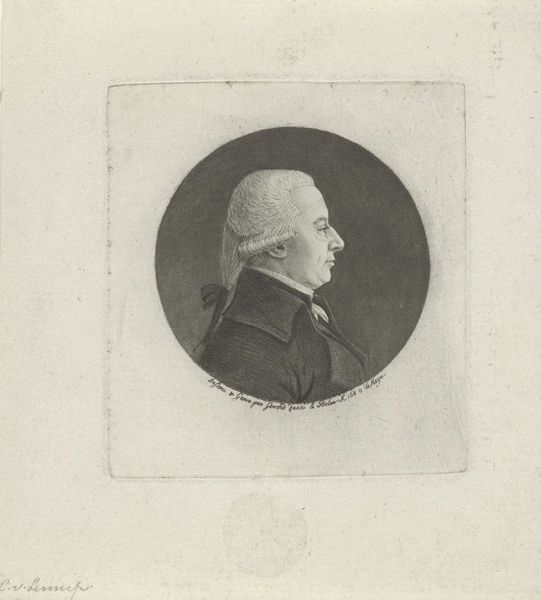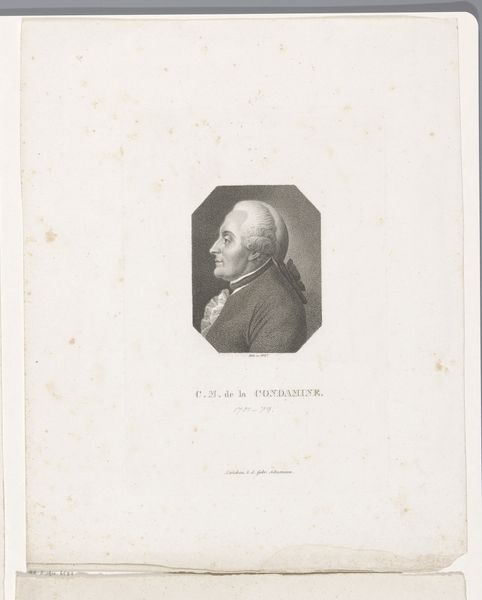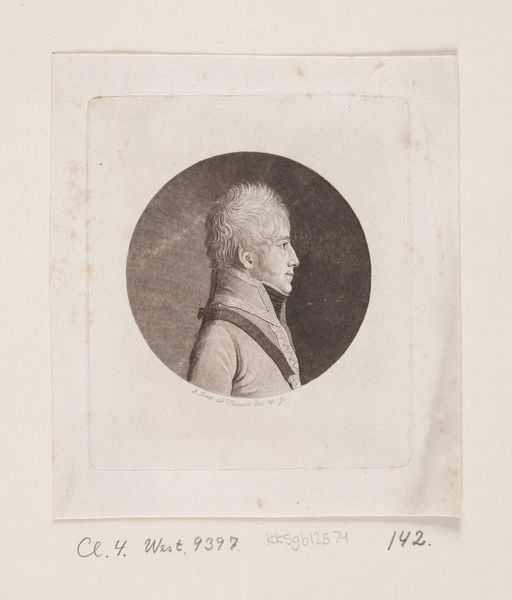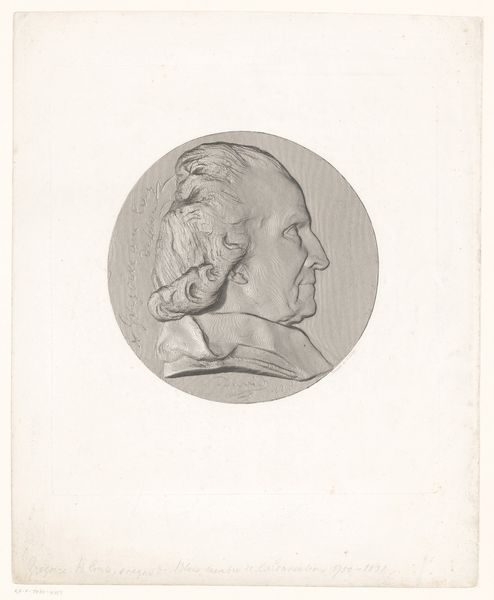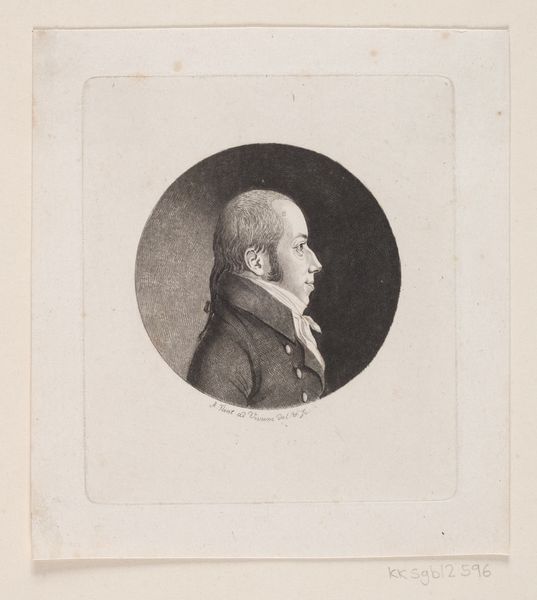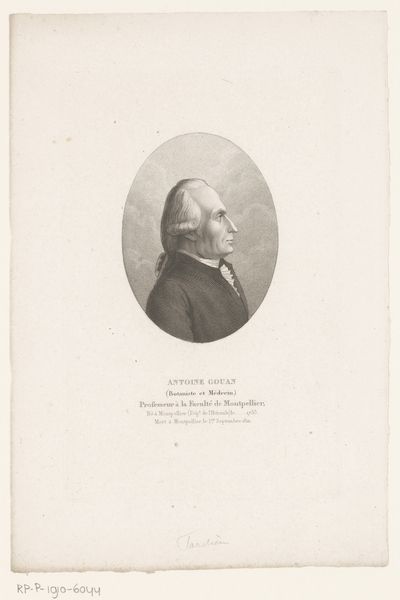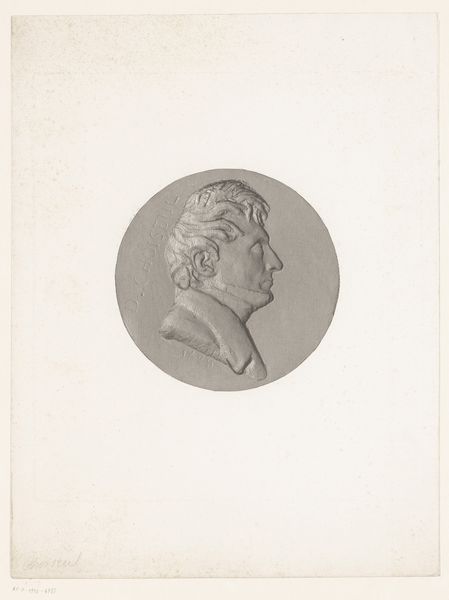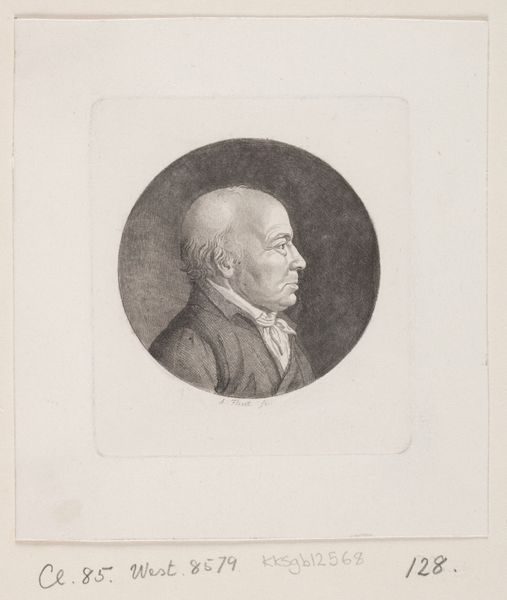
print, engraving
#
portrait
#
neoclacissism
# print
#
engraving
Dimensions: 62 mm (None) (billedmaal)
Editor: This is Andreas Flint’s engraving of Poul Friederich Skibsted, made sometime between 1767 and 1824. It’s a fairly standard portrait, but there’s something very austere about it. What do you make of this piece? Curator: Indeed. As a product of its time, this portrait speaks volumes about the role of art in constructing social and political identity. We see Skibsted presented with neoclassical formality, aligning him with the values of reason and order that the elite sought to project, but whose interests were being advanced through the dissemination of the image, and its eventual display? Editor: That's interesting. It does seem like he’s deliberately styled to project an image of authority. How would you say the fact that this is a print affects how it would be received, versus, say, a painting? Curator: Good question. Engravings, as reproducible images, extended the reach of portraits beyond the immediate circles of wealth and power. Prints democratized image production, influencing public perception by making authoritative figures more visible, or allowing those figures to distribute images favorable to their aspirations. Note how carefully crafted and idealized the image is. To whose advantage is this idealization, do you think? Editor: Hmm, it sounds like it benefited both Skibsted and Flint by cementing their positions within society. Did such works always translate directly to the democratization of art? Curator: Not always directly, no. Consider that access to even printed imagery can be limited by literacy and socio-economic factors, subtly influencing how identities are valued within that culture, and prompting us to investigate why the museum displays this particular piece in our time. Editor: This has given me a lot to consider about who controls representation and how it circulates. Thank you for sharing your insights! Curator: My pleasure. These are essential questions, as they compel us to investigate whose stories art really tells, and for what purposes.
Comments
No comments
Be the first to comment and join the conversation on the ultimate creative platform.
